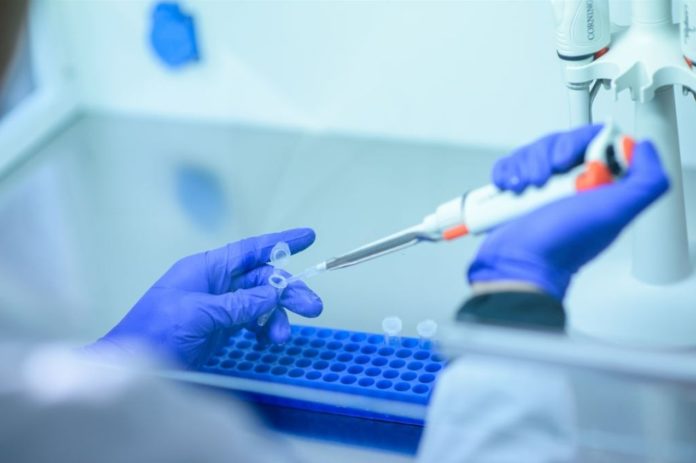According to a new study published online in the journal ACS Infectious Disease, a group of medications long used to treat tapeworm has inspired a compound that has shown two-pronged effectiveness against COVID-19 in laboratory studies.
Professor Kim Janda, PhD, the Ely R. Callaway, Jr. Professor of Chemistry and director of the Worm Institute for Research and Medicine at Scripps Research in La Jolla, CA, designed the compound, which belongs to the salicylanilide class of molecules.
- Scientists in Fear of This New Predator From Red Sea Eating Native Species in Mediterranean
- Does This Mean We Stopped Being Animal and Started Being Human Due to ‘Copy Paste’ Errors?
- The One Lifestyle Choice That Could Reduce Your Heart Disease Risk By More Than 22%
- Aging: This Is What Happens Inside Your Body Right After Exercise
- Immune-Boosting Drink that Mimics Fasting to Reduce Fat – Scientists ‘Were Surprised’ By New Findings
“It has been known for 10 or 15 years that salicylanilides work against certain viruses,” said Janda.
“However, they tend to be gut-restricted and can have toxicity issues.”
In mouse and cell-based tests, Janda’s compound overcomes both issues, acting as an antiviral and anti-inflammatory drug-like compound with properties that bode well for its use in pill form.
Salicylanilides were first discovered in the 1950s in Germany and were used to treat cattle worm infections. Today, tapeworm is treated in animals and humans with versions that include the drug niclosamide. Anti-cancer and antimicrobial properties have also been investigated.
Janda’s modified salicylanilide compound was one of about 60 he built for a different project years ago. Knowing that the SARS-CoV-2 virus had become a global pandemic in early 2020, he began screening his old collection, first in cells with collaborators from Sorrento Therapeutics and The University of Texas Medical Branch, and then in rodent studies with Scripps Research immunologist John Teijaro, PhD.
One compound in particular stood out. It’s known simply as “No. 11,” and it differs from commercial tapeworm medicines in several ways, including its ability to pass through the gut and into the bloodstream, as well as its lack of toxicity.
“Niclosamide is basically digestive-track restricted, and that makes sense, because that’s where parasites reside,” said the researcher.
“For that reason, simple drug repurposing for a COVID treatment would be counterintuitive, as you want something that is readily bioavailable, yet does not possess the systemic toxicity that niclosamide has.”
According to Janda, about 80% of salicylanilide 11 passed into the bloodstream, compared to about 10% of niclosamide, an antiparasitic drug that has recently entered clinical trials as a COVID-19 treatment.
The experiments revealed that No. 11 affected pandemic coronavirus infections in two ways, out of the many modified salicylanilides he had created in his lab. It first hampered the virus’s ability to deposit genetic material into infected cells, a process known as endocytosis. Endocytosis necessitates the virus wrapping viral genes in a lipid-based packet. The packet enters and dissolves in the infected cell, allowing the cell’s protein-building machinery to read it and produce new viral copies. The presence of No. 11 appears to prevent the packet from dissolving.
“The compound’s antiviral mechanism is the key,” said the scientist.
“It blocks the viral material from getting out of the endosome, and it just gets degraded. This process does not allow new viral particles to be made as readily.”
He adds that because it works inside cells rather than on viral spikes, there are no concerns about whether it would work in new variants like Delta and Lambda.
“This mechanism is not dependent on the virus spike protein, so these new variants coming up aren’t going to relegate us to finding new molecules as is the case with vaccines or antibodies.”
In addition, No. 11 reduced potentially toxic inflammation in the research animals, according to Janda, which could be useful in treating acute respiratory distress caused by life-threatening COVID infections. It decreased levels of interleukin 6, a signalling protein that is a key contributor to inflammation in COVID-19 patients with advanced stages.
As highly infectious new variants drive renewed outbreaks of illness and death around the world, better COVID-19 medications are urgently needed. However, according to Janda, salicylanilide No. 11 was developed long before the pandemic.
He saw a clear need for better treatment options after fighting an unpleasant bacterial infection called Clostridioides difficile about ten years ago. Drug-resistant C. difficile strains have become a major cause of drug-resistant diarrheal disease outbreaks in health care facilities around the world, as well as among people who take antibiotics. Janda was very familiar with salicylanilides and knew about their antimicrobial properties as the director of the Worm Institute, which focused on parasitic infections. His lab developed a “library” of modified salicylanilides, some of which showed strong anti-C. difficile activity, and the collection was later licenced by pharmaceutical company Sorrento Therapeutics. Salicylanilide 11 was one of them.
- Scientists in Fear of This New Predator From Red Sea Eating Native Species in Mediterranean
- Does This Mean We Stopped Being Animal and Started Being Human Due to ‘Copy Paste’ Errors?
- The One Lifestyle Choice That Could Reduce Your Heart Disease Risk By More Than 22%
- Aging: This Is What Happens Inside Your Body Right After Exercise
- Immune-Boosting Drink that Mimics Fasting to Reduce Fat – Scientists ‘Were Surprised’ By New Findings
“Salicylanilide 11 actually was placed on the back burner in my laboratory against C. difficile because it’s not as gut-restricted as we would like it to be,” he said.
“But salicylanilide 11 has got a lot of really positive things going for it as a potential therapeutic for COVID.”
Image Credit: Getty
